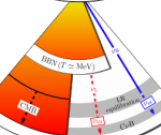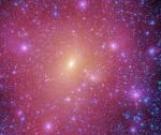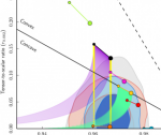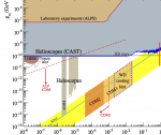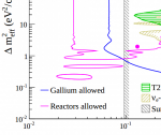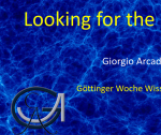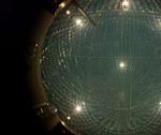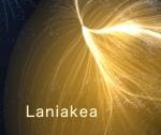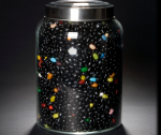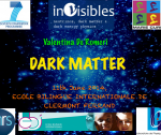Articles & Interviews
- 26/02/2016Paper of the month: First direct observation of Gravitational Waves from a Binary Black Hole MergerOn September 14, 2015 at 11:50 a.m. Central European Time the two detectors of the Laser Interferometer Gravitational-Wave Observatory (LIGO) simultaneously observed a gravitational-wave signal, shown in Fig 1. This epic and historical discovery was an-nounced last week, on Thursday 11, 2016.
- 19/01/2016Paper of the month: A new boson at the LHC?Both the ATLAS and CMS collaborations have recently reported the observation of a small excess, around a mass of 750 GeV, in their searches for new particles decaying into two photons. Is this a first sign of new physics?
- 04/12/2015Paper of the month: ANTARES and IceCube: a joint search for cosmic neutrino sources in the Southern skyThe first combined search for neutrino point sources has been performed by the ANTARES and IceCube collaborations. The result of this joint analysis has been submitted to the Astrophysical Journal as well as to the ArXiv (hep-ex/1511.02149v1). No source has been identified, but the complementarity of the two experiments improves the sensitivity to point sources, thus allowing for more stringent upper limits on the neutrino flux from the sources considered in the analysis.
- 15/10/2015Paper of the month: Non-thermal cosmic neutrino backgroundThe Cosmic Neutrino Background (CNB) is a solid prediction of the Standard Models of Particle Physics and Cosmology. In the early universe, neutrinos were formed as part of the thermal bath, a hot plasma filling the universe (thermal production). As the universe expanded and cooled down to MeV temperatures, the neutrinos decoupled from the thermal bath, traveling freely through space ever since. Neutrinos are very weakly interacting particles, which makes the detection of this neutrino background very challenging and so far experimentally inaccessible. However, on the other hand, this same property implies that once we succeed in measuring the cosmic neutrino background, we can not only learn something about the properties of neutrinos but also the CNB is a window to the very early universe, back to the times of the formation of light elements in Big Bang Nucleosynthesis (BBN), when the neutrinos decoupled from the thermal bath at about two minutes after the “Big Bang”. For comparison, the cousin of the CNB, the better-known Cosmic Microwave Background (CMB), consisting of background photons instead of neutrinos, had lead to major breakthroughs in modern cosmology. This window however only leads back to temperature around 1 eV, nearly 400,000 years later than the CNB window. This paper discusses how physics beyond the standard model, in particular non-thermally generated right-handed neutrinos, can modify the CNB predictions.
- 30/06/2015Alicia Rivera (El Pais), interviews Fabiola Gianotti, future Director General at CERN, on her professional career, the discovery of the Higgs boson, gender balance in Science and her musical expertise as a pianist.
- 25/06/2015Article published in El País on 21 june 2015. Alicia Rivera reports on Invisibles15, particularly outlining synergies between Science and Art. Exploring those connections is the aim of the outreach sessions organised in collaboration with the Thyssen Bornemisza Museum.
- 01/06/2015Paper of the month: Searching for Dark Matter Annihilation from Milky Way Dwarf Spheroidal Galaxies with Six Years of Fermi-LAT DataIndirect searches for dark matter through γ-rays are among the most promising ways to unravel the nature of this mysterious component of the Universe. Here we discuss a recent analysis performed by the Fermi-LAT collaboration focused on observations of dwarf galaxies.
- 07/04/2015Paper of the month: Planck 2015 results. XX. Constraints on inflationDid the early Universe undergo inflation, a period of extremely rapid, almost exponential, expansion? Since its development in the 1980s, the idea of inflation has been very appealing from a theoretical viewpoint, although solid observational evidence was still to be found. Recently, the Planck satellite released its full survey data, shedding some light on the question.
- 26/03/2015Paper of the month: A possible indication of momentum-dependent asymmetric dark matter in the Sun, by Aaron C. Vincent, Pat Scott, and Aldo SerenelliAn article by a former ESR has been featured in several popular science publications, including Physics World.
- 14/01/2015Paper of the month: Axion helioscopes update: the status of CAST and IAXO, by T. Dafni, F.J. Iguaz, on behalf of the CAST, IAXO collaborationsThe axion – a hypothetical light elementary particle – is among the most promising extensions of the Standard Model of particle physics. Not only does it solve a long-standing problem within the Standard Model, the strong CP problem, but it could also be the source of dark matter, a mysterious substance five times more abundant than the ordinary 'visible' matter in our Universe. This paper reports on recent results and future plans for the search of this particle. If they exist, axions should be produced abundantly in the sun and can be searched for with special telescopes such as CAST and IAXO.
- 16/12/2014Paper of the month: Search for short baseline νe disappearance with the T2K near detectorNeutrino oscillations have been confirmed in many experiments in the last two decades. Almost all the observed oscillations fit quite well in the standard three neutrino picture where we have electron, tau and muon ”type or flavour” neutrinos. Oscillations can occur as the flavour of the neutrino does not correspond to a distinct massive particle. The distinct mass-state neutrinos are the physical particles that move freely through space and are made up of a combination of electron, tau and muon flavour neutrinos. So if you observe a neutrino in flight, you might observe the muon component one time, and the electron component the next. It is this change of neutrino flavour over time that we call neutrino oscillations.
- 05/11/2014Paper of the month: Planck intermediate results. XXX. The angular power spectrum of polarized dust emission at intermediate and high Galactic latitudes by R. Adam et al.One of the most exciting news of this year was the recent claim from the BICEP2 experiment of an indirect measurement of primordial gravitational waves. The experiment is based in the South Pole and designed to measure the polarization of the cosmic background radiation, focusing on the so-called B-modes. These modes can give insight on the physics of early stages of the Universe. In particular, inflationary theories predict the existence of a gravitational wave background which in turn can be seen nowadays as B-modes of polarized cosmic radiation. Unfortunately, there are other sources of B-modes, such as synchrotron radiation, gravitational lensing or polarized thermal emission from diffuse galactic dust.
- 17/10/2014Giorgio Arcadi discusses neutrinos and dark matter
- 01/10/2014Paper of the month: Background model systematics for the Fermi GeV excess by Francesca Calore, Ilias Cholis and Christoph WenigerThe Fermi-LAT Space Telescope looks deeply inside the high energy cosmos providing a detailed picture of the Universe's most extraordinary phenomena. Among its powerful discoveries (blazars, active galaxies, gamma-ray bursts, neutron stars and even high energy eruptions from our own Sun) the most surprising and challenging one is an excess in gamma-rays coming from the center of our Galaxy, that cannot be explained with the standard astrophysical background. What are these unexpected high energy messengers telling us?
- 09/07/2014Below you will find a recently published article about Invisibles. The article discusses the general topics of dark matter, dark energy and neutrinos, and the European efforts to research them. It also highlights the training nature of the network, which provides next generation scientists with the necessary skills to lead this quest for knowledge.
- 30/06/2014Public lecture delivered by Thierry Lasserre at the Palais de la Découverte, Paris, on Thursday July 10th.
- 27/06/2014Valentina De Romeri explains dark matter




